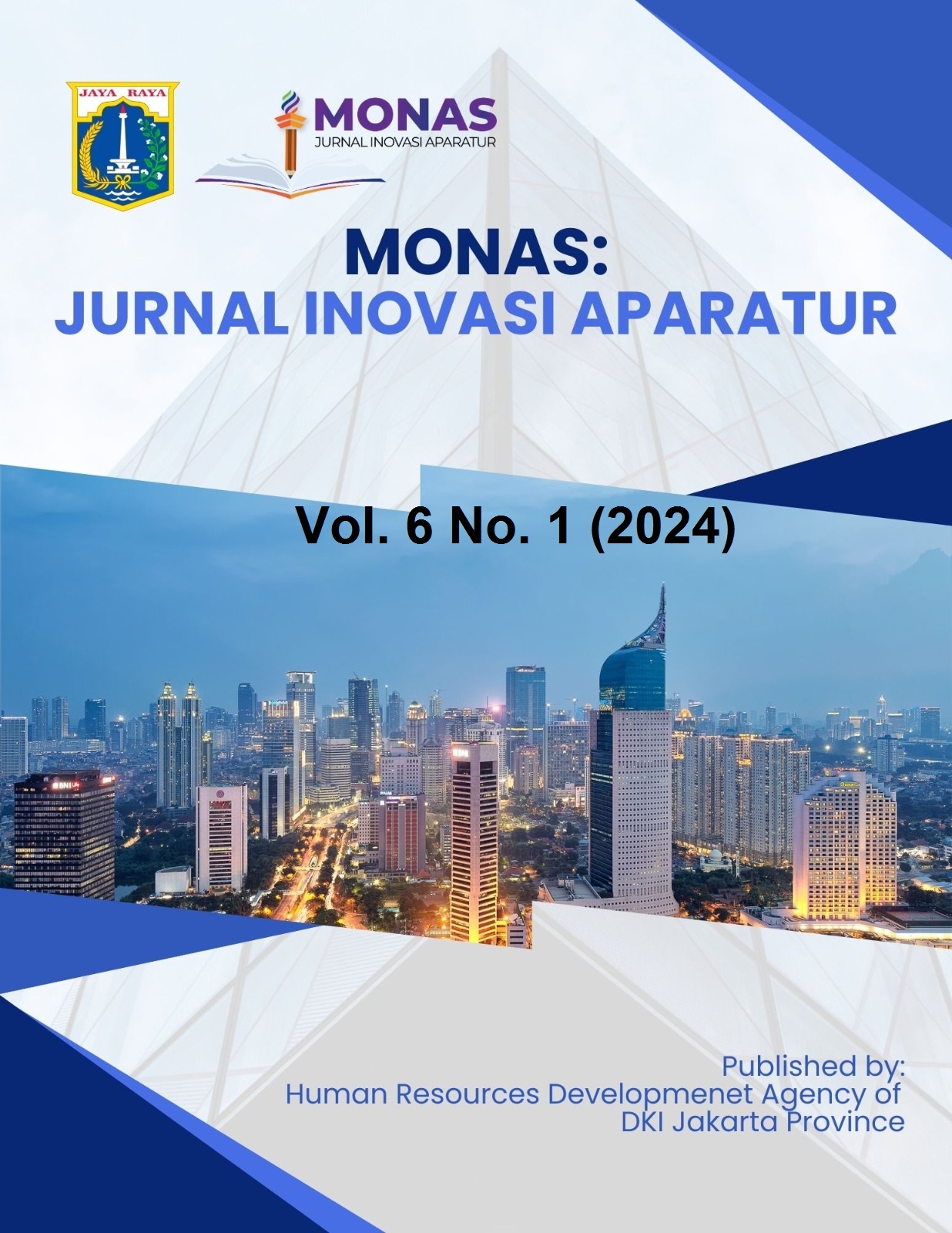The Impact of Zoning Policy Implementation and the Education Production Function in Improving the Quality of Senior High School Education
DOI:
https://doi.org/10.54849/monas.v6i1.200Keywords:
school quality, education zoning, education GiniAbstract
This study aims to examine the inequality in the quality of education in 117 public high schools in DKI Jakarta, as well as the effect of implementing the PPDB zoning policy in improving the quality of school education. Utilizing a panel dataset of school units processed through quantitative analysis and Fixed-Effect (FE) econometric regression estimation, this study analyzes the Education Production Function. The research also investigates educational quality disparities based on Gini coefficients with the National Examination scores as indicators. The results of the study found that inequality between schools in DKI Jakarta was at a low level. Furthermore, it is found that the UN participant-to-teacher ratio, teacher education and experience, as well as the implementation of the zoning policy for student admission (PPDB), have an impact on improving school UN score achievements. In the future, school excellence will be distributed divergently.
References
Altinok, N. (2008). Do School Resources Increase School Quality? Brussels Economic Review, 435-458. https://ideas.repec.org/a/bxr/bxrceb/2013-77432.html
Armstrong, P. (2009). The Impact of Teacher Characteristics on Student Performance: An Analysis Using Hierarchical Linear Modelling. https://doi.org/10.4102/sajce.v5i2.393
Berkowitz, M. W. (2011). What Works in Values Education? International Journal of Educational Research, 153-158. https://dx.doi.org/10.1016/j.ijer.2011.07.003https://doi.org/10.1016/j.ijer.2011.07.003
Bowles, S. (1970). Towards an Educational Production Function. Education, Income, and Human Capital, 11-70. https://EconPapers.repec.org/RePEc:nbr:nberch:3276
Buddin, R., & Zamarro, G. (2009). Teacher Qualifications and Student Achievement in Urban Elementary Schools. Journal of Urban Economics, 103-115. https://doi.org/10.1016/j.jue.2009.05.001
Castello-Climent, A. (2010). Inequality and Growth in Advanced Economies: an Empirical Investigation. The Journal of Economic Inequality, 293-321. https://doi.org/10.1007/s10888-010-9133-4
Crespo-Cuaresma, J., & Sauer, P. (2012). Gini Coefficients of Educational Attainment: Age Group Specific Trends in Educational (In)equality. https://api.semanticscholar.org/CorpusID:41658919
Gungor, N. D. (2010). Education, Human Capital Inequality And Economic Growth: Evidence From Turkey. Regional and Sectoral Economic Studies, 169-184. https://ideas.repec.org/a/eaa/eerese/v10y2010i2_4.html
Hanushek, E. A., & Woessmann, L. (2007). The Role Of Education Quality For Economic Growth. World Bank Policy Research Working Paper. https://ssrn.com/abstract=960379
Harris, D. N., & Sass, T. (2011). Teacher Training, Teacher Quality and Student Achievement. Journal of Public Economics, 798-812. https://doi.org/10.1016/j.jpubeco.2010.11.009
Mincer, J. (1975). Education, Experience, and the Distribution of Earnings and Employment: An Overview. Education, Income, and Human Behavior, 71-94. https://ideas.repec.org/h/nbr/nberch/3693.html
Rao, R., & Jani, R. (2008). School Quality, Educational Inequality and Economic Growth. International Education Studies, 135-141. https://dx.doi.org/10.5539/ies.v1n2p135
Suryadarma, D., Suryahadi, A., Sumarto, S., & Rogers, F. H. (2004). The Determinants of Student Performance in Indonesian Public Primary Schools: the Role of Teachers and Schools. SMERU Working Paper, 56-67. https://api.semanticscholar.org/CorpusID:62896664
Suryadarma, D., Suryahadi, A., Sumarto, S., & Rogers, F. H. (2006). Improving Student Performance in Public Primary Schools in Developing Countries: Evidence from Indonesia. Education Economics, 401-429. https://doi.org/10.1080/09645290600854110
Thomas, V., Wang, Y., & Fan, X. (2001). Measuring Education Inequality: Gini Coefficients of Education. Policy Research Working Paper Series.
Tobias, J., Wales, J., Syamsulhakim, E., & Suharti. (2014). Toward Improving Education Quality: Indonesia’s Promising Path. Working Papers in Economics and Development Studies. https://www.jstor.org/stable/resrep50240
Todaro, M. P., & Smith, S. C. (2012). Economic Development. Addison-Wesley.
Tomul, E. (2009). Measuring regional inequality of education in Turkey: an evaluation by Gini index. Procedia - Social and Behavioral Sciences, 949-952. https://doi.org/10.1016/j.sbspro.2009.01.168
Widyastuti, R. T. (2020). Dampak Pemberlakuan Sistem Zonasi terhadpa Mutu Sekolah dan Peserta Didik. Jurnal Pendidikan Sains dan Teknologi. https://dx.doi.org/10.47668/edusaintek.v7i1.46
Wilkinson, R., & Pickett, K. (2010). The Spirit Level: Why Equality is Better for Everyone. London: Cambridge University Press.
Wo[ss]mann, L., & West, M. (2006). Class-size Effects in School Systems Around the World: Evidence from Between-grade Variation in TIMSS. European Economic Review, 695-736. https://doi.org/10.1016/j.euroecorev.2004.11.005
Zahra, S., Fahmi, M., & Satriatna, B. (2018). Impact of School Zoning: A Review of The Economic Literature. Working Papers in Economics and Development Studies (WoPEDS). https://ideas.repec.org/p/unp/wpaper/201801.html
Downloads
Published
Issue
Section
License
Authors who publish in this journal agree to the following terms:
- Authors retain copyright and grant the journal right of first publication with the work simultaneously licensed under a Creative Commons Attribution-NonCommercial-ShareAlike 4.0 International License that allows others to share the work with an acknowledgement of the work's authorship and initial publication in this journal.
- The journal allows the authors to hold the copyright without restrictions and to retain publishing rights without restrictions.
- Authors can enter into separate, additional contractual arrangements for the non-exclusive distribution of the journal's published version of the work (e.g., post it to an institutional repository or publish it in a book), with an acknowledgement of its initial publication in this journal.








